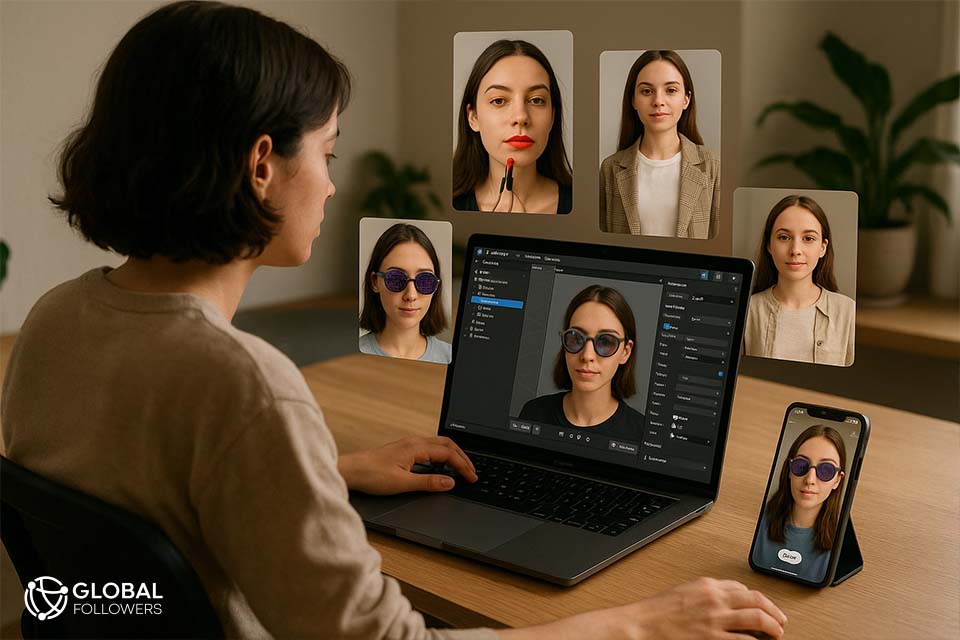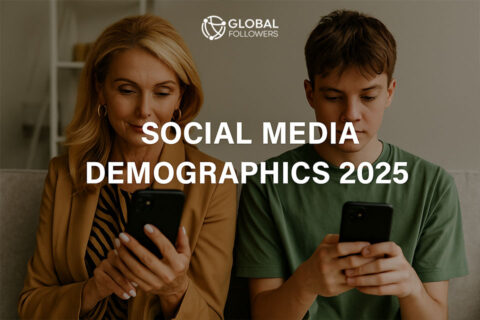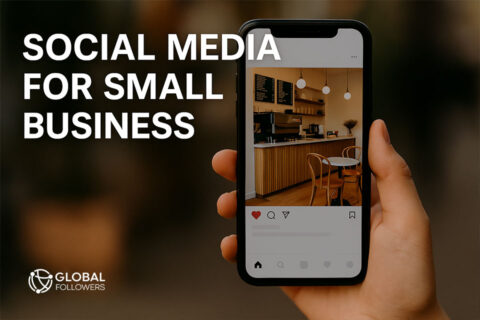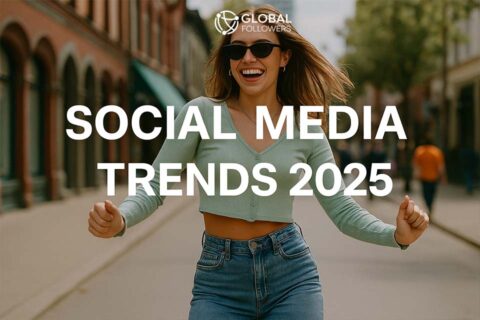The way we interact with digital platforms is rapidly evolving and at the center of this evolution is augmented reality in social media. In 2025, AR isn’t just a novelty for filters; it’s becoming a vital tool for storytelling, e-commerce, entertainment, and live interaction.
Whether it’s trying on virtual sunglasses through a phone camera or attending a product launch in 3D space, the synergy between augmented reality and social media is redefining how brands connect with audiences. Let’s explore how AR social media experiences are transforming everything from engagement to monetization.

- What Is Augmented Reality in Social Media?
- Digital Media Integration: A Turning Point for Creators and Brands
- Boost Your Social Media 🚀
- How Virtual Reality and Augmented Reality Are Shaping Social Platforms
- Use Cases of Social AR That Are Leading in 2025
- Challenges and What to Watch
- The Future: Social AR as a Standard, Not a Trend
- Frequently Asked Questions About
What Is Augmented Reality in Social Media?
Augmented reality in social media involves overlaying digital elements like graphics, 3D objects, or sound onto real-world environments through smartphone cameras or AR glasses. Unlike VR, which replaces reality, AR enhances it.
Platforms such as Instagram, Snapchat, and TikTok are leading the charge by embedding AR features directly into their interfaces. These tools are no longer just fun extras they are core to social augmented reality engagement.
Digital Media Integration: A Turning Point for Creators and Brands
With the rise of digital media integration, social platforms are investing heavily in making AR more accessible to both users and developers. Spark AR (by Meta), TikTok’s Effect House, and Snapchat’s Lens Studio are now open to creators of all sizes. If you’re also exploring how automation and content scaling fit into this shift, check out these AI tools for social media management to complement your AR strategies.
This shift means marketers and influencers alike can create custom effects that:
- Align with brand identity
- Promote product discovery
- Encourage viral interaction
For example, a fashion brand can use AR social media filters to let users “try on” new clothing lines directly from Instagram Stories. This not only boosts visibility but also bridges the gap between digital and physical experiences.
Boost Your Social Media 🚀
Grow engagement fast, safe, easy, and effective!
Explore GlobalFollowers ServicesHow Virtual Reality and Augmented Reality Are Shaping Social Platforms
Though different in application, virtual reality social media and AR are converging. Meta’s Horizon Worlds and TikTok’s upcoming VR studio projects are prime examples of immersive platforms gaining mainstream momentum.
Social AR will likely serve as the gateway to full VR adoption, offering users more dynamic ways to:
- Attend virtual events
- Engage in real-time with 3D avatars
- Interact with branded virtual spaces
As users grow comfortable with social AR overlays, brands have a new frontier for loyalty and retention.
Use Cases of Social AR That Are Leading in 2025
Let’s look at how social augmented reality is already being applied by leading platforms and industries:
- AR Product Demos: Beauty brands like Sephora use AR filters to let users try on makeup virtually before purchasing. This leads to higher conversion rates and fewer returns.
- Augmented Reality Live Streaming: Influencers now host augmented reality live streaming sessions featuring interactive effects, virtual sets, and branded overlays that fans can engage with in real time.
- Event Marketing: Major events like Coachella and Fashion Week incorporate AR filters that allow global audiences to “attend” through immersive digital layers extending reach beyond physical boundaries.
- Gaming and Entertainment: Brands are teaming up with mobile games and streamers to launch co-branded AR features, merging play and promotion for deeper audience interaction.
TikTok’s AR studio tools are enabling creators to go viral through challenges and branded effects especially when content reaches the right audience. In competitive spaces like TikTok, building a strong follower base can significantly enhance the visibility of interactive campaigns. Brands often explore ways to increase their TikTok followers as part of a broader AR engagement strategy.
Challenges and What to Watch
Despite its promise, AR social media integration still faces hurdles:
- Platform-specific limitations
- High design and dev cost for custom AR assets
- Slow mobile hardware adoption in some markets
However, as digital media integration accelerates and tools become more intuitive, these barriers are shrinking. The focus is now shifting from feasibility to strategy.
The Future: Social AR as a Standard, Not a Trend
In the near future, social AR will not be considered an “add-on” but a foundational feature. Content without interactivity may soon feel outdated especially among younger users who value immersive, personalized experiences. To understand how this fits into the broader evolution of online platforms, explore these current social media trends shaping user behavior and brand expectations in 2025.
For businesses, this means it’s time to think beyond flat content. Invest in augmented reality in social media now to stay relevant, boost engagement, and lead the next phase of social media innovation.




No comments to show.